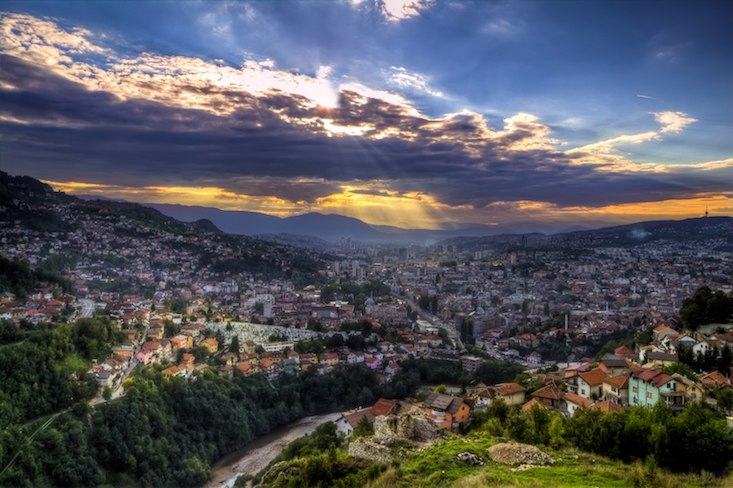Discover how Sarajevo’s Muslims break their fast during Ramadan

As the sun sets each day behind the surrounding hills of Sarajevo, people gather at the Yellow Bastion, a ten-minute walk from the heart of the Old Town, waiting for the bang to mark the end of the fast and the dawn of the feast.
The Yellow Bastion was built as a defence structure during the Ottoman rule during the 18th century, and ever since, a cannon is fired there during Ramadan, to mark the end of the fasting day for the city’s Muslims. Gunner Smajil Krivic has fired the cannon since 1997, and will do so for the remainder of Ramadan, wearing a traditional Bosnian fez.
Whether everyone has fasted or not, Sarajevans gather on blankets and picnic tables, and as the cannon is fired, a small firework is launched into the evening sky as the bang reverberates down the valley, in time with the lighting up of the city’s minarets.
The day’s fast is broken by drinking a glass of fresh lemonade, before eating a date, the food that Maryam ate when she gave birth to Isa according to the Koran. The meal eaten at the end of the day is known as the iftar consisting of traditional Bosnian dishes such as somun, a type of flatbread served during Ramadan.
Alma, a 56-year-old woman describes the sense of solidarity that fasting brings to the community: “Fasting is not difficult for me, not even for a second. The feeling of togetherness inspires you, and then every dinner feels like a holiday.”
Many stay out all night eating sweets, drinking coffee and then go home in the early hours to have sehur, the meal Muslims eat before sunrise and the next round of fasting.
According to Harris, a 33-year-old man from Cazin, “no other city experiences Ramadan like Sarajevo does.”
Source: Balkan Insight